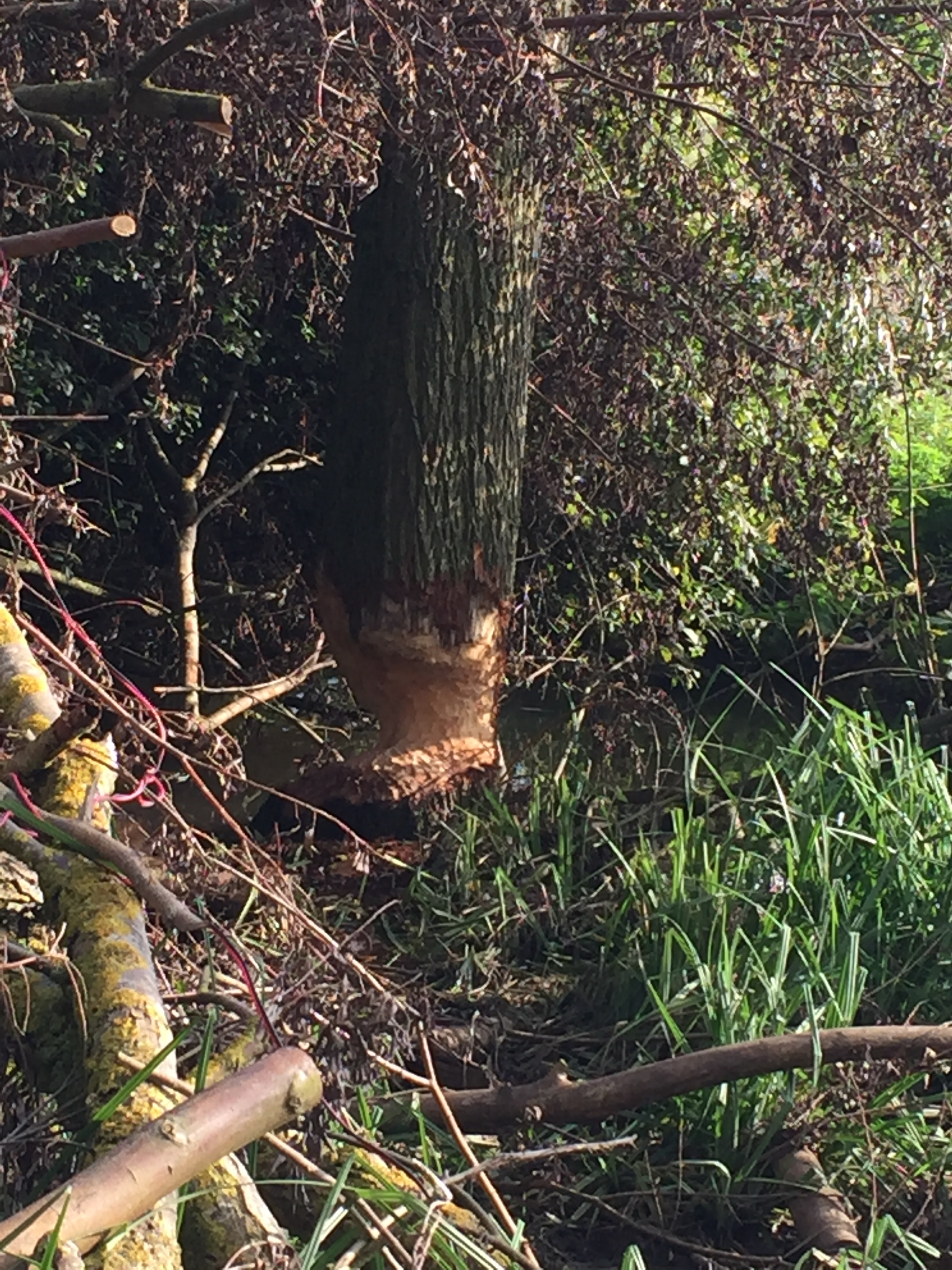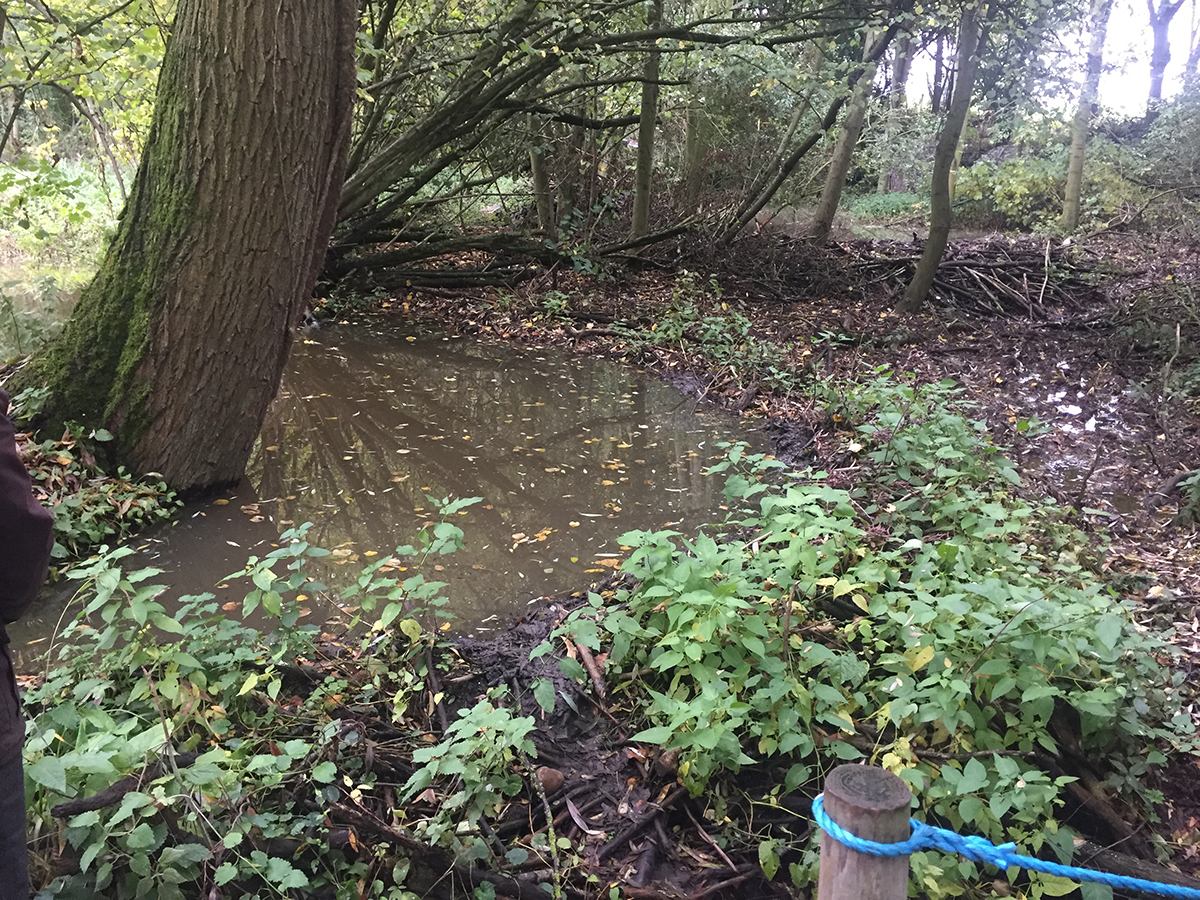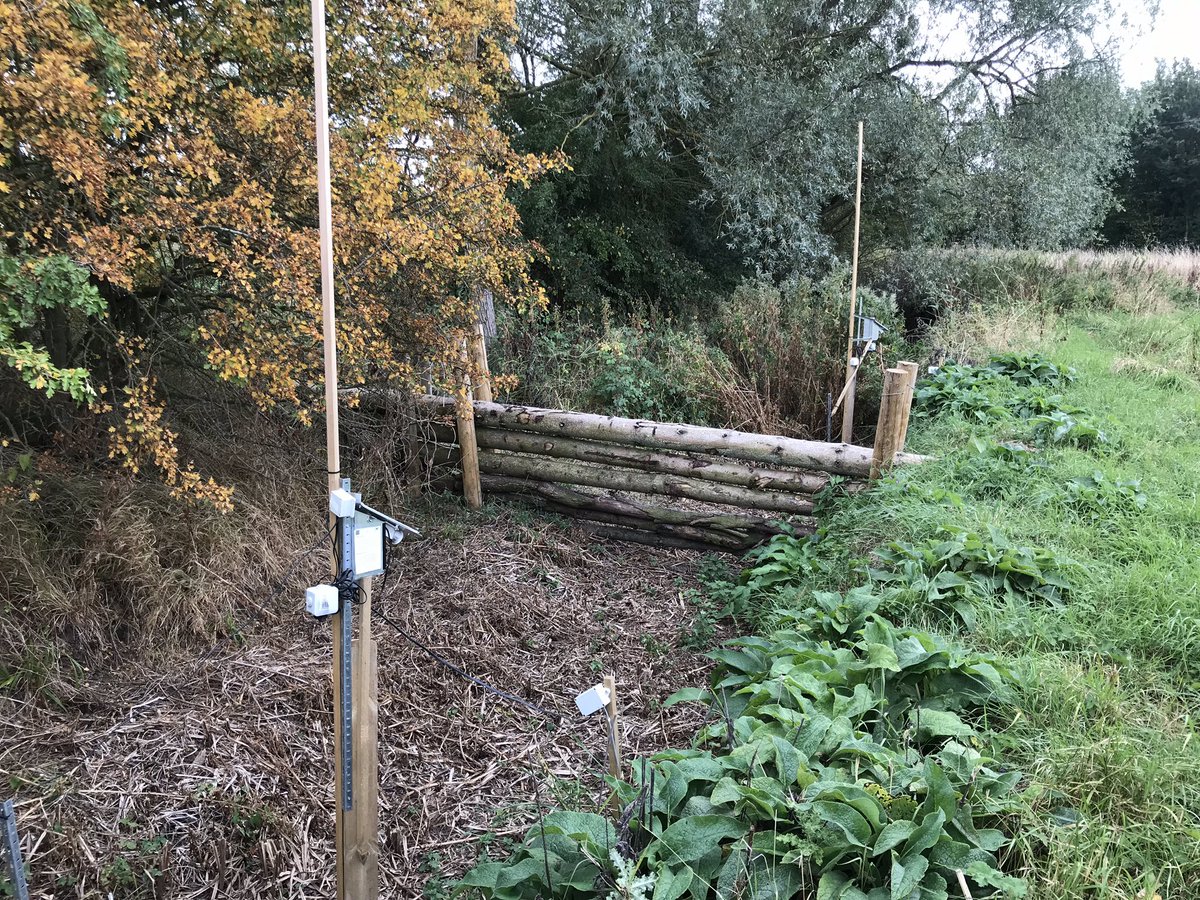Man vs Beast: Beavers for Natural Flood Management
Two European Beavers, bred in Devon, were released into an enclosed compound within a small woodland.
08/11/19
Guest blog by Jane Herbert from Essex and Suffolk Rivers Trust.
On March 14th, beavers returned to Essex after being extinct for 400 years. They are part of a Natural Flood Management (NFM) project on Spains Hall Estate to reduce flooding to the village of Finchingfield.
Two European Beavers, bred in Devon by Derek Gow, were released into an enclosed compound within a small woodland. They have been shaping their environment for 7 months now, which includes a small watercourse and 2-3 springs, and the change they have made is amazing. They have created 14 dams and moved onto their second lodge! As you will see from the photos below, they have turned their attention to two Cricket bat willows, which are about 20-30 cm in diameter and have nearly gnawed their way through one trunk already, which is about 1 months’ work. In the short time they have been their they have completely altered their habitat and increased the levels of water on site, even during a very dry spring and summer.

This cricket bat willow has been gnawed by the beavers.
The quality and flows of water leaving the compound is being monitored by the Environment Agency to see how the presence of these animals affects these. There is also a time lapse camera in situ so the behaviour of the Beavers can be observed to see them shape their home. The time lapse camera footage and water monitoring data can be viewed on the Spains Hall Estate website.

Here is the first dam created by beavers, with another in the background.
In another part of the Estate, on a different watercourse, several leaky dams have been installed to simulate what the beavers are doing in their compound.
These dams hold water back but still allow a small amount of water through, so they will not act as a complete barrier. This will slow the flow through the area reducing the velocity of the water hitting Finchingfield during high flows.
These dams should also reduce the levels of sediment travelling downstream so water quality should be improved. Again, all data is being collected by the Environment Agency and available on the Spains Hall Estate website.

A leaky dam from another part of the site.
These NFM methods can then be compared to see which shows the greater changes in water quality and water flows. This is a great opportunity to see how well man-made features compare to natural methods that are now missing from the UK environment.
If you would like to see for yourself how the beavers are shaping their habitat then tours can be booked on the Spains Hall Estate website.